How to Launch Microsoft AI Agents for Healthcare and Create Your Own Language Model?

The healthcare industry is undergoing a digital transformation, and Healthcare AI agents are at the forefront of this change. From managing appointments to providing patient support, these AI-driven agents streamline operations, enhance patient care, and reduce human workload. Leveraging AI agents for healthcare can enable pharmaceutical companies, hospitals, clinics, and other healthcare providers to achieve workflow automation in healthcare, enhancing overall efficiency.
One of the leading platforms for deploying these AI agents is Microsoft’s robust AI ecosystem. With advanced tools and solutions, Microsoft’s platform makes it easier for healthcare providers and healthcare organizations to integrate AI agents into their operations. This guide provides a step-by-step approach to launching Microsoft Healthcare agent service, offering a comprehensive walkthrough for healthcare professionals, IT administrators, and AI developers.
To deploy AI Agents for Healthcare, You’ll Need to Set Up your Microsoft Environment. Here’s How To Do It
- Access Microsoft Azure:
Log in to the Microsoft Azure portal.
- If you don’t have an account, create one to access Azure services.
- After this you can search on the search bar directly like the "Healthcare Agent Service".

- Create a Resource Group:
- Organize your resources by creating a resource group to manage AI agents, data, and workflows.
- Grouping resources together allows for better tracking, access control, and cost management.

- After creating a resource group we can create Healthcare agent service. After this you can search on the search bar directly like the "Healthcare Agent Service".


- We need to create the resource for the service.There are three main steps for that:
I. Basics
II. Tags
III. Review + create

- Tags will allow you to specify the particular resources. This is especially for any resource that you are going to deploy in the Azure portal.

- Review and create is for the final validation of whatever the details you have entered to create the resources for healthcare agent service.

- After completing the deployment, you can go to the resource

- Here you can see your AI medical agent resource of healthcare agent service.

- After this, copy the management portal url and paste it on another tab.


11. Here you can see your AI medical agents in which you can work on numerous functions like manage, Configuration, Integration and so on.


How to Create Your Own Conversational Language Model?
It leverages cutting-edge language models to grasp the intent behind user utterances while recognizing word variations, synonyms, and even misspellings. With multilingual support, it streamlines the orchestration of bots powered by Conversational Language Understanding, and Question Answering.
To create a Conversational Language Understanding model, you’ll need a Cognitive Service for Language account along with the connection details for your Conversational Language Understanding endpoint.
How to Create Your First Conversational Language Understanding Project
1. Sign In to Language Studio: Log in using your Azure credentials.
2. Access Conversational Language Understanding: Navigate to the "Understand Questions and Conversational Language" tab and select Open Conversational Language Understanding.
3. Create a New Project: Click Create New Project and fill in the required details, including the project name, primary utterance language (with the option to enable additional languages), and an optional description.
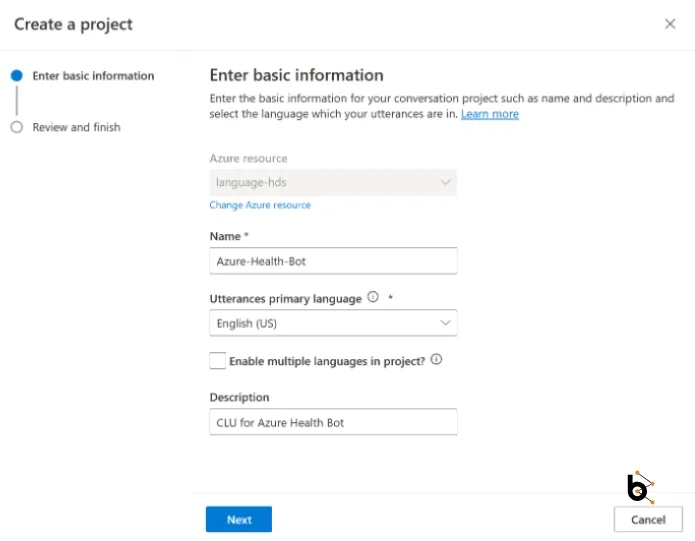
4. The Conversational Language Understanding project operates using Intents and Entities. To create a new intent for scheduling appointments, click on Add, provide a name for the intent, such as MakeAppointment, and then select Add Intent to finalize the creation.

5. Click on the name of the newly created intent, go to the Select Intent dropdown, choose your intent (in this case, MakeAppointment), and provide an example utterance, such as "I want to make a late evening appointment." Finally, press Enter to save it.
6. Include at least 15 sentences to create a solid foundational model. Here are a few example sentences you can use:
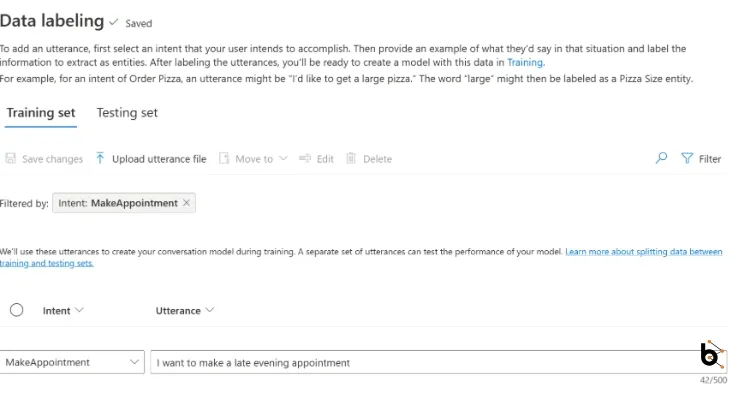
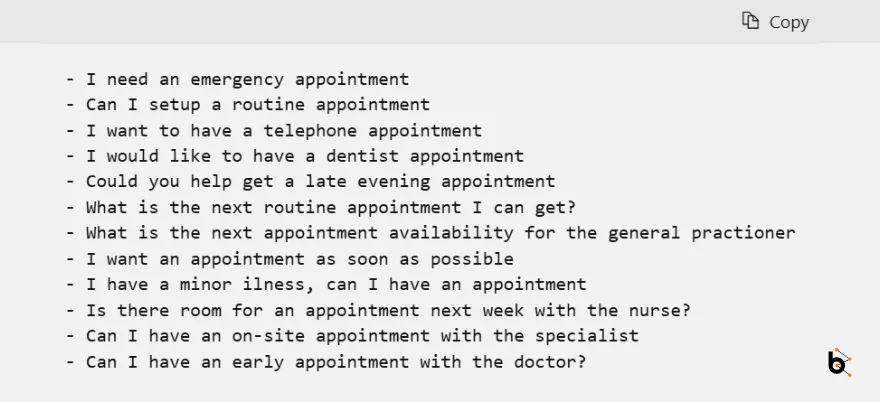
- To begin adding entities, click on Add Entity located on the right side. Assign a name, such as AppointmentType, and select Add Entity. Next, identify the appointment types within each sentence and associate them with your entity.

- For each sentence, choose the appropriate appointment type and click Save changes.
To further refine the model, you can navigate to Testing Set at the top of the page and create a test batch. However, this tutorial will not cover that step.
- Train Your Model
The next step involves initiating a training job. On the left panel, select Training jobs and proceed to Start a training job. Assign a name to your model, such as "AppointmentModel." Keep the default settings for Standard training (free) and Data splitting, then click the Train button to begin.
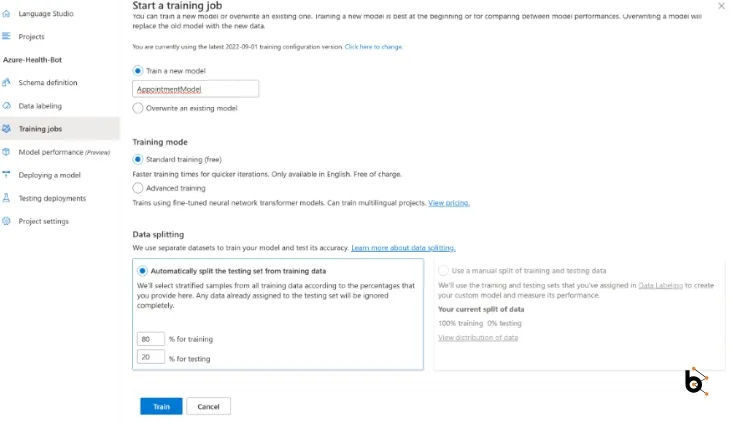
- Wait for the training process to finish, and then proceed to the Deploying a Model section.
- Deploy Your Model
To make the model accessible for the healthcare agent service, you need to create a new deployment. Click on Add Deployment, provide a deployment name (e.g., "AzureHealthBotDeployment"), select your trained model, and click Deploy to complete the process.
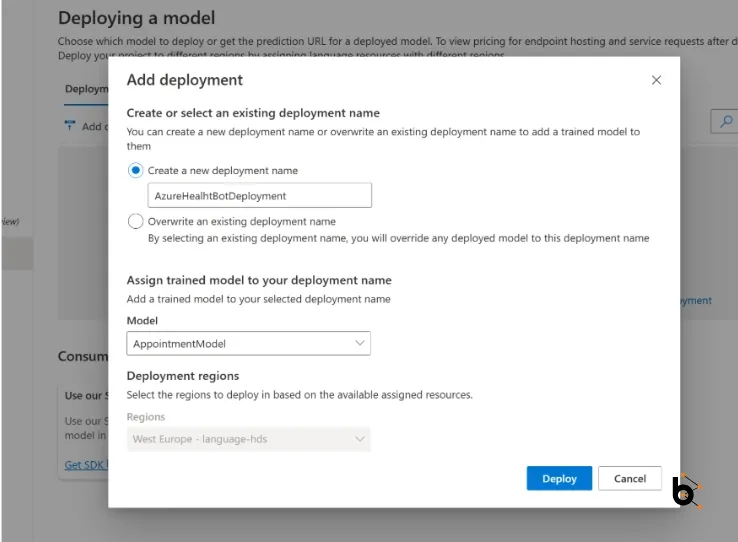
- Once the model is deployed, click on the newly created deployment and select Get Prediction URL. This information can now be used to integrate with your healthcare agent service.
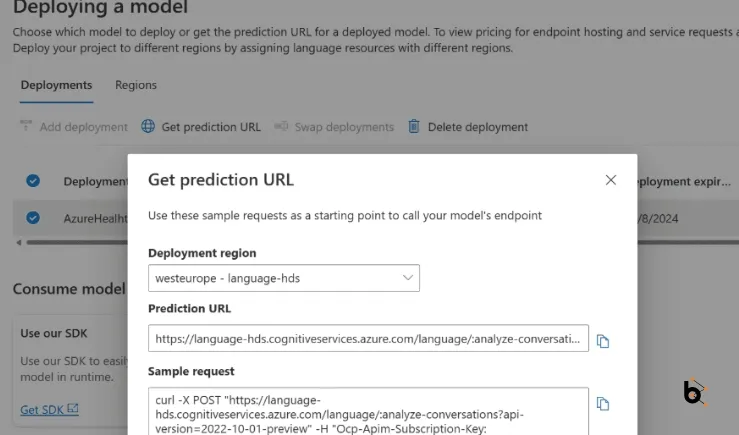
Access Your Healthcare Agent Service
- Navigate to Language -> Models ->
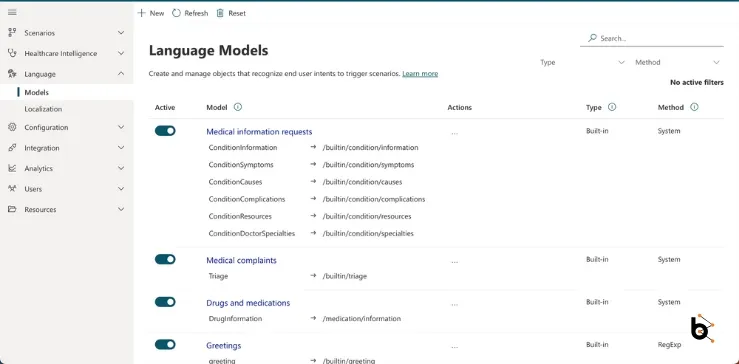
- Add New Language Model
I. Under Method, select Conversational Language Understanding.
II. Copy all the prediction URL parameters, including:
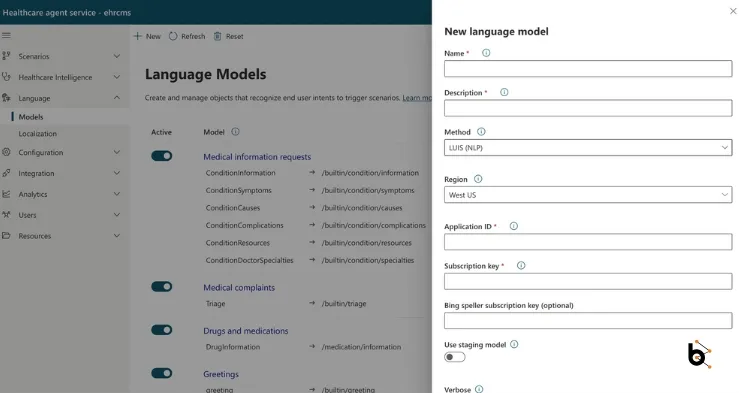
- Method: Conversational Language Understanding
- Endpoint: The endpoint of your instance
- Subscription: Your subscription key
- Project Name: The name of your Question Answer project
- Deployment Name: The name of your deployment
- API Version: The API version of your deployment.
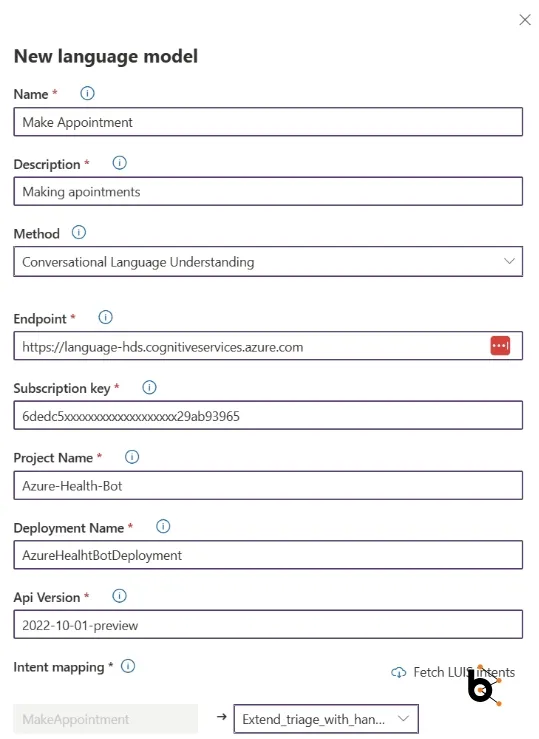
Harness the Power of AI Agents to Revolutionize Healthcare Operations
If you’re looking to leverage Healthcare AI solutions, Microsoft’s platform is a powerful choice. The process may seem complex, but with a clear roadmap, development tools, and proper testing, you can successfully launch AI agents that transform your healthcare operations. Whether it’s patient support, workflow automation, or advanced clinical assistance, AI agents for healthcare are reshaping the future of healthcare service delivery.
At Bluebash, we understand the challenges of implementing AI solutions in healthcare and are here to guide you every step of the way. Our team of experts specializes in integrating Microsoft’s healthcare AI agents, ensuring seamless deployment and compliance with industry regulations. Let us help you harness the power of AI to streamline your operations, reduce costs, and enhance patient care.
Conclusion
Deploying Microsoft Healthcare AI agents is a game-changer for the healthcare sector. With proper planning, development, configuration, and integration, healthcare providers can benefit from workflow automation in healthcare, reduce operational costs, and improve patient satisfaction. From setting up Azure to launching the AI agent, and creating your own Conversational Language Model to enhance agent capabilities, every step requires precision and compliance with healthcare regulations.
FAQs
- What are AI agents for healthcare, and how do they enhance operations?
AI agents for healthcare automate tasks like appointment scheduling, patient support, and workflow management. They improve efficiency, reduce costs, and enhance patient care by streamlining processes and providing intelligent support. - How does Microsoft’s platform support the deployment of AI agents in healthcare?
Microsoft’s platform, with tools like Azure and Cognitive Services, supports seamless AI agent integration. These tools automate workflows, ensure regulatory compliance, and improve patient services. - What steps are involved in setting up Microsoft Healthcare AI agents?
Setting up involves creating an Azure account, a resource group, deploying the healthcare agent service, and configuring resources. It also includes creating and training Conversational Language Understanding models for tailored healthcare interactions. - How can Bluebash help in implementing AI agents for healthcare?
Bluebash specializes in deploying Microsoft’s healthcare AI agents with seamless integration and compliance. Our solutions help healthcare providers automate workflows, reduce costs, and improve patient care. - How can Conversational Language Understanding enhance healthcare AI agents?
Conversational Language Understanding (CLU) improves AI agents by interpreting natural language inputs. It enhances interactions by understanding user intent, managing appointments, answering queries, and recognizing multiple languages.



